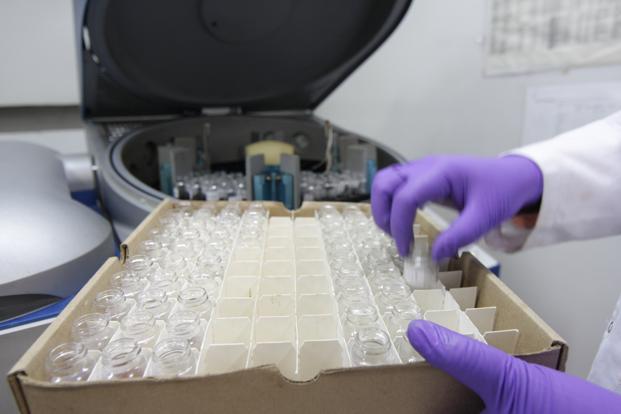
“India’s universal health plan that aims to offer guaranteed benefits to a sixth of the world’s population will cost an estimated 1.6 trillion rupees ($26 billion) over the next four years, a senior health ministry official said.
Under the National Health Assurance Mission, Prime Minister Narendra Modi’s government would provide all citizens with free drugs and diagnostic treatment, as well as insurance cover to treat serious ailments.”
From – Businessworld
October 30, 2014 | Greg

“The 2014 World Cup elevated soccer to the top of Aidan Leffler’s roster of obsessions, rivaled only by endangered big cats—especially jaguars, “the coolest”—and Star Wars spaceships. In recognition of his new interest, he’s set up a miniature soccer field with 4-foot-wide goals in his backyard in suburban Bellevue, Wash. “Watch this!” he shouts, preparing to fire a penalty kick.
Small for his age, Aidan, 11, moves awkwardly, shoulders high and hunched. He uses a lightweight plastic beach ball, not a regulation leather soccer ball. He begins his approach, pulls back his right foot, and … collapses to the grass.
Mitch Leffler, the sole spectator, moves toward his son. “I’m OK,” Aidan says. “I can do it.” He struggles onto his hands and knees, raises his butt, places his hands one at a time on his thighs, and slowly pushes himself into an upright position. “My leg just wasn’t there,” he says matter-of-factly. His father nods, and the game resumes.
Aidan has Duchenne, the deadliest strain of muscular dystrophy…”
From – Businessweek
October 30, 2014 | Greg
“Generic drugmaker Cipla Ltd said on Thursday it has asked the Indian government to revoke five patents held by Swiss firm Novartis AG on respiratory drug Onbrez and has launched a cheaper copy to boost access in the local market.
Cipla alleged that Novartis has had patents on the medicine since 2008 but instead of producing it in India has imported a “negligible quantity” from Switzerland, leading to a shortage of supplies in the Indian market.”
From – Reuters
October 30, 2014 | Greg

“The era of globalised markets is also an era of globalised sovereignties. Nation states must constantly sync their policies with global constituencies of policies and citizens. At times, domestic disharmony is the price nation states may be required and willing to pay. The case in point here is the proposed review of the intellectual property rights (IPR) policy, particularly those clauses that are related to pharmaceutical patent policy. The Department of Industrial Policy and Promotion has constituted a think tank on IPR whose primary mandate is to evolve a roadmap for the country’s IPR policy and to better India’s purportedly “dismal” record in protecting pharmaceutical patents.”
From – The Indian Express
October 29, 2014 | Greg

“India’s patent office has conceded a key demand of the pharmaceutical industry, dropping a proposed clause that would have enforced a more stringent examination of patent applications. A clause in the draft rules, mandating the use of generic names of pharmaceutical substances to check whether discovery claims made in a drug patent application were already known or not, has been dropped in the final rules.”
From – Livemint
October 29, 2014 | Greg

“Ranbaxy Laboratories in June finally managed to finesse its regulatory problems enough to get a generic of Novartis’ ($NVS) Diovan to market, boosting its own fortunes while depriving the Swiss drugmaker of the extra revenues it enjoyed for nearly two years. Next up is a generic of AstraZeneca ($AZN) blockbuster Nexium. The question remains when.”
From – FiercePharma
October 29, 2014 | Greg
“A glimpse of just what could go wrong was evident during Beijing Olympics 2008, when China closed down many of its API plants to cut environmental pollution. “This led to an immediate price rise of around 20% in some bulk drugs which were being sourced solely from China. We had no alternative since China has a near monopoly in several APIs,” said Ramesh Adige, a pharma expert who was formerly an executive director with Ranbaxy Labs.”
From – The Economic Times
October 29, 2014 | Greg
“Google, ever fond of trying to solve seemingly impossible challenges, has its sights set on the company’s next moonshot: detecting cancer.”
From – Fast Company
October 28, 2014 | Greg

“J&J is officially cutting the ribbon on its new partnering office in Shanghai, completing the pharma giant’s global plan to hit the ground running in all the world’s top biotech hot spots. It’s starting out in style, with J&J ($JNJ) taking the wraps off of a lineup of new discovery deals with universities in the region. And it’s spreading out feelers for more deals through satellite offices in Australia, Singapore and Japan.”
From – FierceBiotech
October 28, 2014 | Greg
“India had rigorous price control on medicines for 35 years (1978-2013). The 1978 Policy had 347 drugs and all its formulations – single ingredient and fixed dose combinations – under price control, covering over 90 per cent of the pharmaceutical market. The 1986 policy reduced the number of drugs under price control from 347 to 142 and also offered better norms for the post-manufacturing expenses to attract new investment in the pharmaceutical sector. In 1995, the number of drugs under price control was further reduced to 74, controlling about 50 per cent of the market.”
From – Business Standard
October 28, 2014 | Greg
“The pressure from the US government on India seems to be working. With India’s intellectual property rights (IPR) regime facing flak, and the USA launching an out-of-cycle review of India’s IPR regime, the Department of Industrial Policy and Promotion (DIPP) has set up a think-tank to draft a National Intellectual Property Rights Policy. Work is also on to set up IPR courts to fast track cases, reports The Pharma Letter’s India correspondent.”
From – The Pharma Letter
October 28, 2014 | Greg
Dr. Peter B. Bach is a physician at Memorial Sloan Kettering Cancer Center and the Director of its Center for Health Policy and Outcomes. He is a passionate advocate for patients and often eloquently expresses concerns on the high prices of drugs, particularly new cancer therapies. When he speaks, many people including myself pay close attention. However, his guest post on Forbes.com entitled “Could High Drug Prices Be Bad For Innovation” unfortunately is off-base.
Like many, Bach bemoans the cost of new drugs, such as Gilead’s breakthough hepatitis C treatment, Sovaldi. However, despite being priced at $1,000/pill and $84,000 for a course of therapy, economic analyses show that this drug actually will save the healthcare system money. By the way, it also cures the disease. In reality, this drug is priced based on the value it delivers. Curing hepatitis C will result in reducing the need for liver transplants in these patients and will stave off liver cancer, resulting in considerable savings to the healthcare system, thereby making Sovaldi use cost effective. The value that a drug brings should be the major determinant for the cost of a new medicine.
Read more – Forbes
October 24, 2014 | Greg
Policymakers are scrutinizing high prices for specialty drugs like never before. Gilead’s Sovaldi at $84,000 for a treatment course is in part to blame — or credit — for this, but so are Vertex’ Kalydeco, Merck’s Keytruda , and a series of other six figure drugs.
The pharmaceutical industry has responded in a predictable way. High prices are needed to fuel the fire of innovation they explain. True. Absent a potential return, investors would certainly stay far away. But what about the follow on question? Just how high do prices need to be? When does the potential to profit exceed that which is needed to drive innovation and pervert the market?
Read more – Forbes
October 24, 2014 | Greg

Medical charity Medecins Sans Frontieres (MSF) on Saturday accused the United States of ratcheting up pressure on India’s new government to relax strict patent conditions which have made the country the “world’s pharmacy”.
India’s vast generics industry is a major supplier of cheap copycat, lifesaving drugs to treat diabetes, cancer and other diseases afflicting poor people locally and globally who cannot afford expensive branded versions.
“India has been the world’s affordable drug safe-haven — the biggest source of affordable medicines,” Leena Menghaney, South Asia Regional Head of MSF’s Access Campaign, told AFP.
“But now the US is trying to paint India as a rogue nation” in the area of patent law, she said in an interview.
Read more – Rawstory
October 18, 2014 | Greg
It was an amber August night in Western Uganda in 2007. As the director of the U.S. Centers for Disease Control and Prevention (CDC), I suited up in full biosafety gear to observe a team of our top disease detectives as they tried to find the source of a deadly outbreak. Crouching, I followed the team, all of us in heavy-duty protective suits, into a cave filled with more than 400,000 bats.
A small cluster of people in the community had become ill with Marburg virus, which causes a deadly fever very similar to Ebola infection. Bats have long been the prime suspects in the mystery of hemorrhagic fevers like Marburg and its close cousin, Ebola. The newly reopened cave seemed linked to the outbreak, but the CDC team needed proof. That meant trapping bats to check them for the virus. As we entered the cave, the bats were absolutely everywhere. One of them landed on my face shield and looked me right in the eye, sizing me up. That proved to be a sobering gaze into the dark side of Mother Nature.
Read more – Forbes
October 18, 2014 | Greg






